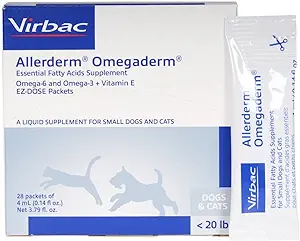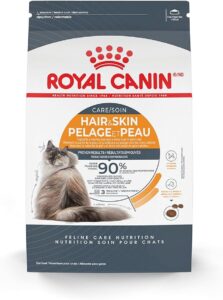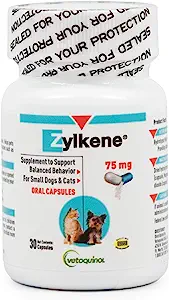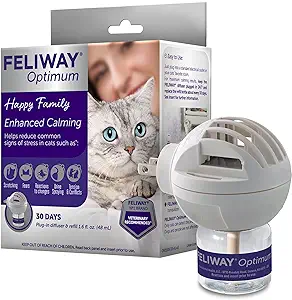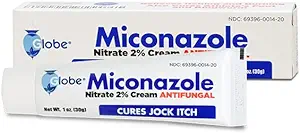Why does a cat go bald?
We can divide bald spots on your cat’s chest into two groups. On the one hand you have the bald spots that are caused by hair breaking off. But you also have bald spots that occur because the hairs are no longer produced. In the first group, if you look and feel closely, there are stubbles on the skin where the baldness is. But if the hairs are not produced, the stubble is not there. This is a big difference to investigate in your cat as it gives an indication of what the problem is.
Reasons that cause bald spots on your cat's chest
Bald spots on your cat's chest due to broken hair
As mentioned, you can make a distinction between broken hairs and ungrown hairs. In the vast majority of cases, your cat’s bald chest involves excessive licking due to itching. The causes of this itching may be a flea problem or flea allergy, a food allergy, an atopic allergy (= an allergic reaction to environmental substances), or mites. But skin infections, stress or injuries can also cause your cat to lick his chest excessively. However, hair can also break off naturally when the quality of hair is poor. This particularly plays a role in a fungal infection where the hair is, as it were, “eaten” by a skin fungus. They then break off easily.
Bald spots on your cat's chest due to reduced hair production
But reduced hair production is caused by a problem in the hair follicles, where hair is produced. Finally, a skin fungus was mentioned above. But in addition to making the hair brittle, a skin fungus can also destroy the skin and hair follicles. In that case we no longer see new hairs developing. Hormone problems can also prevent hair production on your cat’s chest. For example, cats with thyroid problems sometimes have baldness on the chest. Less common is Cushing’s disease in cats. However, this disease can also cause baldness in your cat.
In addition, the body’s own cells can also accidentally attack and destroy the hair follicles, resulting in bald spots on your cat’s chest. In that case we talk about an autoimmune disease. With old age, the hair follicles are no longer of such good quality, resulting in a balding coat on your cat’s chest. And finally, poor nutrition will also ensure that there are not enough building materials to produce hair. Partly for this reason, stray cats often look a bit balding.
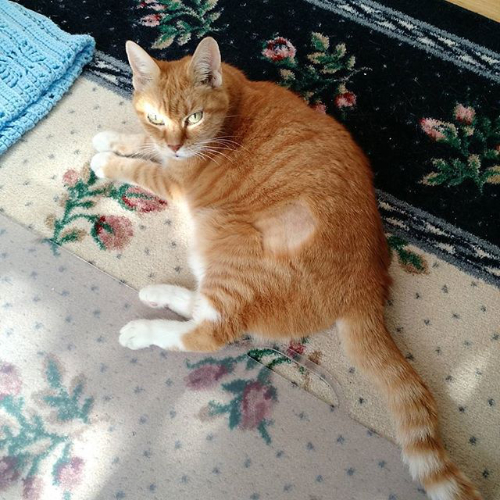
Why does my cat groom himself bald?
Cats lick themselves when they wash themselves excessively. The cause of this may be that they are stressed and by washing themselves they try to calm themselves down. The result is that they may feel less stressed, but their chest (or other body parts) may have developed bald spots.
Another reason why your cat licks himself is that he may be itchy. This can occur on his entire body, but also only on certain body parts, such as on his chest.
Can a cat have alopecia?
Alopecia is an expensive name for baldness. So yes, your cat could have alopecia. After all, that is what this article is about. However, you will now understand that alopecia and therefore baldness can have many different causes. It is your job to find a solution. At least if that’s necessary. Because a Sphinx cat obviously does not need a solution, but it does have a serious form of alopecia.
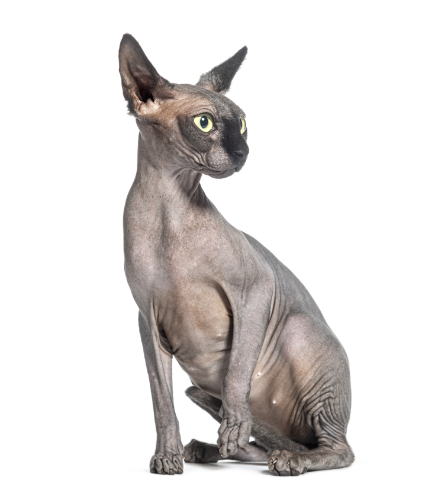
Cat has bald spots and scabs
If there are bald spots in combination with scabs, you know that the skin itself has also been damaged. This can be caused by parasites such as mites, or by a skin fungus. But your cat may also bite himself just to get rid of the itching. Strangely enough, pain is a more manageable feeling than itching.
What causes that itch on your cat's chest that it turns into bald spots?
In this case, there are a number of common possibilities. The flea, the flea allergy, mites, or allergies. Other causes are rare in cats.
Fleas are the cause of bald spots on your cat's chest
Fleas are small black jumpy insects that mainly live in the area around your cat. So not on your cat itself. Most of the fleas live in their cat-bed or in cracks and behind your skirting boards. Only a small part of the fleas live on your cat. They only use your cat to suck blood when they want to reproduce. But the fleas that do live on your cat jump there and walk there, which already causes itching. And then they bite him every now and then. So even more itching. And to relieve that itching, your cat will groom and bite himself excessively, resulting in bald spots on its chest.
A flea allergy is the cause of bald spots on your cat's chest
In the previous case, it is mainly the movement and biting that causes your cat to itch. But with a flea allergy, your cat has an allergic reaction to the saliva that the flea bites into your cat’s skin. Very characteristic of a flea allergy is that your cat usually licks his lower back. So the part of its back that is just in front of the tail. Excessive itching on just his chest is not often seen with a flea allergy. But it still is possible. The itching is so bad that your cat usually has small scabs on his lower back from biting.
Mites are the cause of bald spots on your cat's chest
Mites are slightly less common than fleas, but unfortunately we still see them very often. There are several types of mites that cause bald spots on your cat’s chest. For example, you have the Demodex mite that lives in the hair follicle and destroys the hair follicle. In that case, no more hair is formed. But the Sarcoptes mite, which lives in the upper layers of the skin, causes itching, causing your cat to lick itself bald. Other mites can also cause itching, but the itching is much milder.
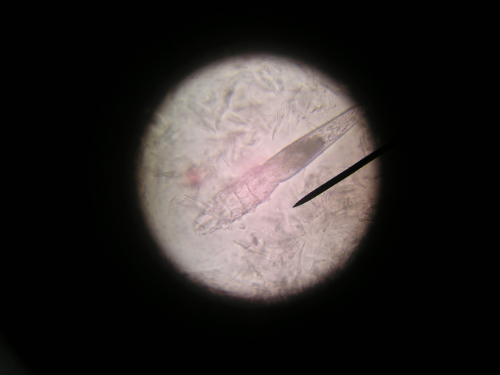
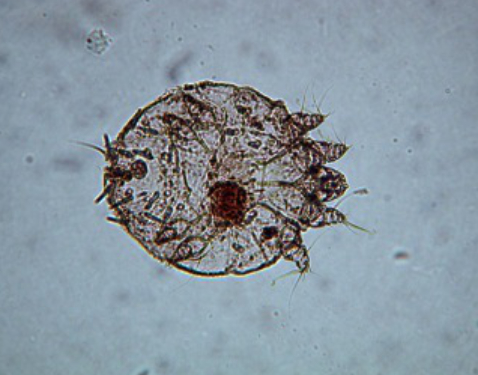
Allergic reactions are the cause of bald spots on your cat's chest
If bald spots appear on your cat’s chest as a result of an allergy, it is in most cases a food allergy or an atopy. The latter is an allergic reaction to environmental substances that your cat inhales, such as tree pollen, grass pollen, house dust mites, etc. A food allergy is an allergic reaction to an ingredient in its food or treats. These allergic reactions can manifest themselves as just itching, but also with skin infections that are partly caused by your cat scratching itself, but also because your cat’s immune system destroys its skin and hair follicles. In both cases, bald spots may appear on your cat’s chest.
What to do if your cat has a bald spot?
You can do different things depending on what you think is the cause. But if you have no idea, you can take the following steps one after the other.
Treating fleas and mites
It is wise to pick up a mite killing agent at the counter of your vet. This product also works immediately against fleas. For example, Stronghold, Bravecto, Advocate, etc. all work against mites and fleas. This way you will treat mites, fleas and a flea allergy. And you probably already gave a flea treatment anyway, so this is not too much of an investment. Unfortunately, the products you can get from the pet store do not work as strong against mites. But if you wish to give your cat a more natural anti-mite product, you can try Mange-relief. But it is not as powerfull as the products from your veterinarian.
Increase skin resistance
When the skin is in top condition, problems are less likely to strike the skin. But if the skin resistance is not optimal, the slightest thing can cause itching or damage. And these in turn cause baldness. That is why it is wise to increase skin resistance with essential fatty acids. Allerderm Omegaderm is a very good way to improve your cat’s skin resistance. But salmon oil also works very well.
Resolve stress
If you feel that your cat may sometimes suffer from stress, it is important to address this. Of course, removing the cause of the stress is the solution. But usually an owner does not know what the cause is. In that case, you can give your cat Zylkène tablets. This drug ensures that your cat has an increased serotonin level in its brain. This makes him feel happier and more confident. It is not an anti-depressant, but works with natural ingredients. However, it does have a similar mechanism of action as anti-depressants.
If you don’t feel like giving your cat tablets, you can also try to see if Feliway is a solution for him. You can then provide the room in which your cat spends most of its time with a Feliway diffuser in the socket. This releases a pheromone into the air in the room that gives your cat a feeling of safety and security. You should replace the evaporator every month and the room should not be excessively ventilated. If a window is always open, the concentration of Feliway in the air in the room will never be high enough for it to work properly.
Treating skin fungus
With a skin fungus you often see red skin, flaking coat and broken hair. Your cat may be itchy, but that doesn’t have to be the case. If the bald spots on your cat’s chest are small and do not cover almost the entire chest, you can try to see if a skin fungal ointment offers the solution. It goes without saying that you should not apply this to your entire cat.
If you believe that your cat could have a fungus, but the spots are too large, it is better to take your cat to your vet. After an examination to confirm the fungus, he or she can give your cat medication that you can give your cat in its mouth. This way you can treat the skin fungus. In the meantime, pay attention to yourself and other housemates! Because a skin fungus can also spread to people and other pets.
Food allergy test
If you suspect that your cat has an allergic reaction, the food allergy test is the only test you can perform yourself. The other allergies can only be tested by your veterinarian. Do you want to take the food allergy test? Then it is best to give your cat the following food. It is important that your cat gets absolutely nothing else. So no sweets or anything tasty from your refrigerator. Resist those pathetic eyes! Because an allergic reaction is an all or nothing reaction. He only has to ingest a small crumb of something he is allergic to and it makes him itch for 3 weeks. And with this test it is important to find out whether it is really due to the diet or not.
Later, when you are sure that he has a food allergy, you can carefully test whether he develops complaints from his sweets or something from the refrigerator. But during the test period you can only give the special kibble.
After starting the diet you will probably not notice a difference for the first 4 weeks. It takes about 3 weeks for all substances from his old diet to be removed from his body. And only then will you be able to notice recovery. So don’t give up too quickly if you don’t see results. But somewhere between 4 and 8 weeks you should see that he starts to itch less and that his bald spots on his chest start to grow back. Is there no difference after 8 weeks? And have you really, really, really not given anything else to your cat? Then your cat probably has an atopy and you will still have to go to your veterinarian.
When should you go to your vet if your cat has bald spots on his chest?
As soon as you are very concerned about it, it is of course wise to go to your vet. But if your cat does not suffer too much and you are not too stressed about it, you can try the above given advice. Doesn’t it all work or is your cat really going crazy from the itching? Then it is best to go to your vet so that further research can be done. But 9 out of 10 cats will no longer have any problems after applying the above advice. That will save you a trip to your vet. Your cat will be happy with that too.
Good luck!
We hope you have found the answer to the baldness on your cat’s chest. Hopefully he will be a handsome cat again soon. Good luck!


